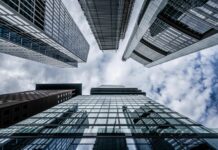Sustainable development is no longer considered a mere addition or a nice-sounding slogan but a “must-have” across virtually every industry. Over half of manufacturing company representatives declare that initiatives in this area are a crucial part of their development strategy. Meanwhile, 94% expect that their company, as well as the entire industry, will introduce more and more changes aimed at sustainable development in the coming years, as revealed by the Autodesk “State of Design & Make” report. Importantly, the majority believe that such initiatives positively impact a company’s short- and long-term operations and will account for a significant portion of their revenues.
“The global trends we are currently seeing in sustainable development fall into the so-called golden triangle: company strategy, organizational culture, and technology,” says Katarzyna Ozon-Timar, Strategic Territory Sales Manager Poland D&M at Autodesk. “If we talk about organizational culture, it has to start from the inside. It might initiate from management, but any change in the company should be understood, perceived as necessary, and executed as soon as possible. In terms of technology, digitalization and digital transformation are crucial, encompassing process changes, process control updating, and internal communication. For the third pillar, strategy, planning is important not only for the next two or three years but 50 years ahead.”
The Autodesk “State of Design & Make” report highlights the key factors that shape business decisions and influence the operations of industrial and design companies covering diverse fields such as architecture, engineering, construction, manufacturing, media and digital product, game and service design. For this year’s edition, Autodesk, in collaboration with the Ipsos research agency, conducted surveys and interviews with about 2,500 representatives of these sectors. The outcome was that sustainable development is no longer an optional extra or catchy slogan but a must-have in almost every industry. Majority of companies are implementing and engaging in sustainability-focused actions, partially influenced by pressures from customers, investors, and employees.
“Sustainable solutions are currently the number one topic when we talk about business, production, and services. They nearly affect all aspects of a company’s operations: from attracting new customers to increasing market shares or building a positive image,” adds Sebastian Brzoza, Director of Applications and Technical Support at Danfoss.
Eighty-three percent of respondents stated the importance of their companies achieving their sustainable development goals, with only 7% seeing their industry and organization doing nothing in this field. Over half acknowledged that their sustainable development initiatives form a key part of their development strategy. A similar percentage would like their companies to prioritize sustainable development as much as profits. However, only 20% of respondents considered it as one of the most important challenges facing their organizations.
“Sustainable solutions involve energy, cooling, heating, water, and raw materials saving. All of this leads to producing higher quality goods and doing it cheaply, more competitively. Sustainable development also concerns ensuring that our factories and buildings don’t emit harmful substances to people and the environment. I see a great opportunity in sustainable development for companies to be closer to people, greener, and more competitive,” says Sebastian Brzoza.
Most experts and leaders assert that sustainable development actions positively impact company operations in both short and long terms. Many believe that such actions will eventually account for a considerable portion of their companies’ revenues.
“Companies are becoming more open and their awareness of sustainable development is growing. This factor is becoming a critical source of added business value,” says Katarzyna Ozon-Timar.
“Sustainable development practices make great sense from a business point of view; furthermore, they are an integral part of it. There’s no other way,” says Agata Stelmach, project director of Upper One at STRABAG Real Estate. “The directions we’re heading in, such as ESG reporting, change of internal policies, and the impact of geopolitical conditions like the rise in energy prices, compelled companies to seek better solutions.”
Regarding the most significant sustainable development changes implemented by companies, the report lists reducing the amount of production waste (35%) and using a larger amount of recycled materials (30%), as well as so-called eco-design, which considers the environmental impact of products and services (30%).
“A clear example of incorporating environmental aspects is STRABAG Real Estate’s new investment, the Upper One office and hotel complex replacing the demolished Atrium International building in the center of Warsaw,” says Agata Stelmach. “We made sure the process adhered to the circular economy principles and 70% of the materials were recycled. Currently, we’re conducting a waste audit and have confirmed total recovery of four fractions: iron, steel, cables, and wood. The marble from the Atrium International was also reused to make floors in the lobby and window halls of the new investment. We donated the Atrium International’s equipment to the Serce Miasta Foundation for the outfitting of their clients’ kitchen. We also collaborated with the BRDA Foundation, which utilized windows from the Atrium, which helped in rebuilding houses and apartments in war-torn parts of Ukraine.”
Sebastian Brzoza gives the example of their new Danfoss factory in Grodzisk Mazowiecki as a sustainable investment. “It is a fully climate-neutral plant where we applied our technologies and applications and adopted the 3R principle. Reduce is to minimize the amount of energy and water used in the entire building. Reuse is to use again, for example, the heat that we can recover from technological processes. We have around 70 places in the factory where we recover heat and then use it, for instance, to prepare utility hot water. The third R is Resource, meaning the use of renewable energy sources and ensuring, for example, that the water used for technological processes is 80% reused.”
The Autodesk report points out that companies that are digitally mature are more inclined to use technological solutions to achieve sustainable development goals; 33% of respondents from such companies stated that artificial intelligence aids them in this respect.
The respondents’ answers also indicate a significant variation in sustainable development efforts depending on company size and the region where it operates. Corporations and large companies are more active in this field than small and medium-sized enterprises, which often lack resources.


















